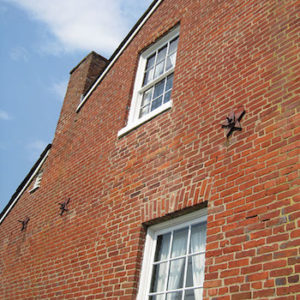
Rankin House (restored)
This date in 1860 recalls the Rankin House, an ally to the American abolitionists and a pivotal point of shelter for many Black slaves escaping bondage before emancipation.
Rankin House was one of the most important entry points on the Underground Railroad. High on a bluff above the Ohio River, the beacon from there lit the night and the darkness of slave state Kentucky across the river. After the Fugitive Slave Act of 1850 was passed, the Reverend John Rankin used his property to light the way for escaping slaves. The Northwest Ordinance of 1787 chose Ohio because it was a free state. Until the end of the American Civil War, the Rankin House was credited with sheltering more than 2,000 escaping slaves.
Serving as a go-between en route to Canada, the Rankin House's proudest achievement may be that it never lost a passenger to slave hunters. Reverend Rankin organized a network of allies and methods to elude pursuers, including spreading misinformation and decoy escapes. One story he enjoyed retelling was the daring winter escape of a young woman who crossed the river on ice floes while clutching her children in her arms. Harriet Beecher Stowe later used the story for the episode involving the character Eliza in "Uncle Tom's Cabin."
The house, located 60 miles south of Cincinnati, became a state memorial in 1938. The Rankin House is a key point of pride in African American history.